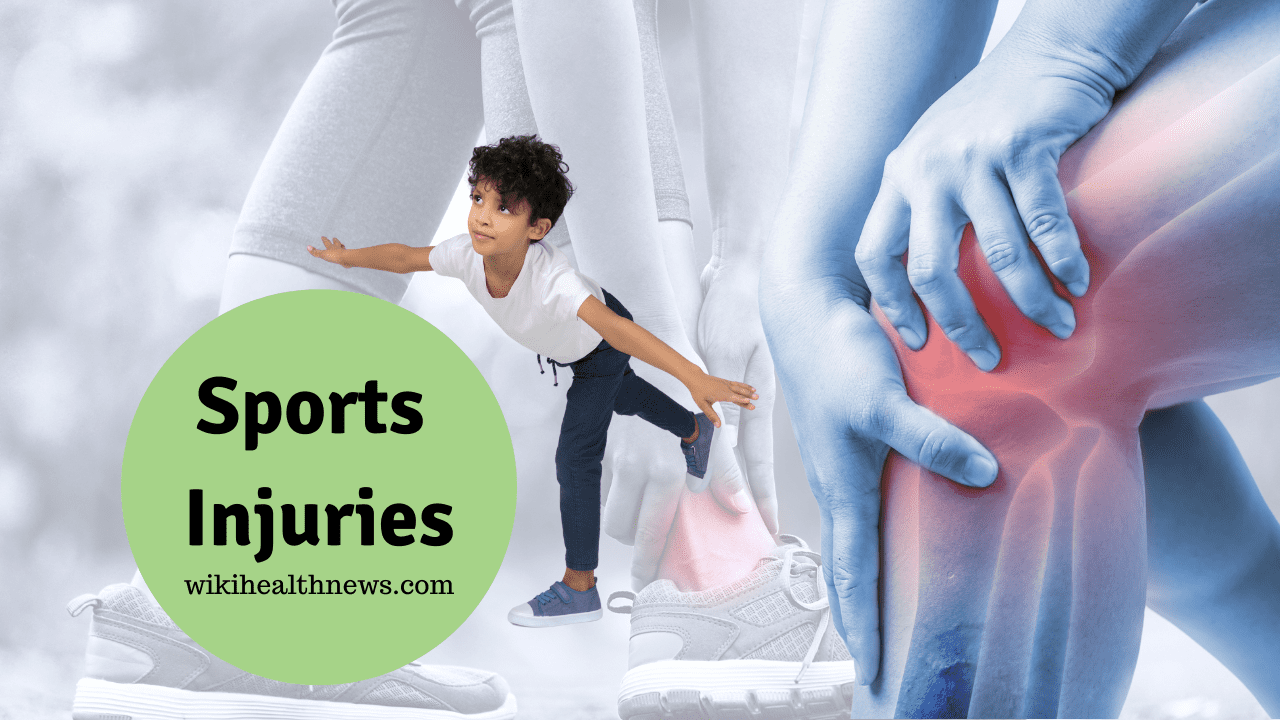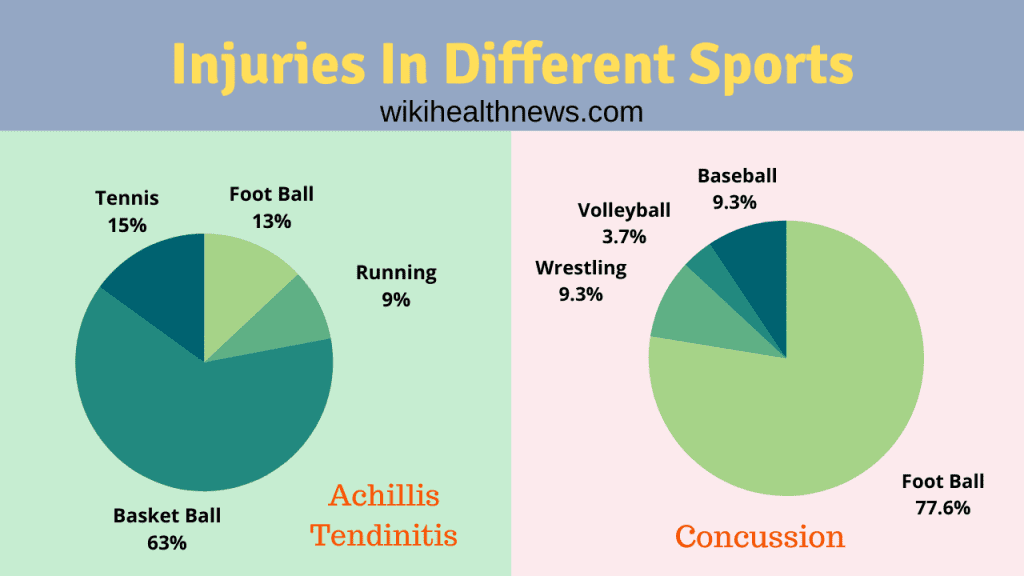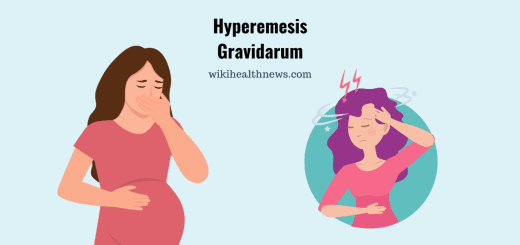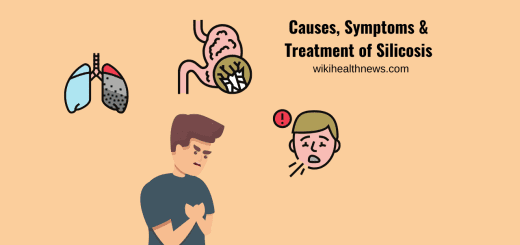Sports Injuries: Must Know Facts

Sports injury is a kind of injury that occurs when engaging in sports or exercise. It can happen by an accident, improper equipment, poor training practices or insufficient warm-up and stretching. Bruises, muscle strains and sprains, tears of tendon and ligaments, broken bones and dislocated joints and head injuries are most common. The joints are the most vulnerable to sports injuries. Injuries may range from mild to severe.
Most common sports injuries:

Muscle strain
It also called as pulled muscle, occurs when your muscle is over stretched or torn. It caused by a result of fatigue, overuse or improper use of muscle. Strain can happen in any muscle but most common in lower back, neck, shoulder and hamstring ( a muscle which is behind your thigh). The difference between muscle strain and muscle soreness is, in muscle soreness, you won’t feel the pain until a day or two later whereas in the muscle strain the pain is usually immediate.
Minor muscle strains usually resolve with RICE – Rest, Ice, Compression and Elevation
NSAIDs (Nonsteroidal anti-inflammatory drugs) help in management of pain and swelling. Major serious muscle strains require evaluation and treatment by a doctor.
Torn ACL
The anterior cruciate ligament (ACL) helps in holding the knee joint together and provides stability Torn ACL is one of the most common Knee injury. Sports such as basketball, football, skiing and tennis has higher risk of ACL tear. It may occur when you are landing in a wrong way, stopping quickly or sudden changing in direction or from a direct blow to the knee. Symptoms include Pain, swelling, and loss of range in motion and may eventually lead to walking difficulty.
Torn ACL needs to be reconstructed surgically, by using a graft from another ligament from the patient own body. Rehabilitation is necessary to rebuild the strength and function of the knee joint after surgery. Depending on the health status, age, and desired level of activity from the patient, some may not choose to have surgery. In such case, braces and physical therapy cannot cure the condition, but may provide some pain relief.
Sprained Ankle:
Sprained ankle is an injury that occurs when the ligaments that support the joint become overstretched when the ankle rolls, twists or turns in an awkward way it happens usually when playing sports or doing everyday activities. Stepping wrong on an uneven surface which result in twists or rolls the foot may lead to an ankle sprain. The pain may vary from mild to moderate Rest, ice, compression, and elevation are used to treat ankle sprains NSAIDs (Nonsteroidal anti-inflammatory drugs) helps in management of pain and swelling, Severe sprains may need a brace or cast for several weeks to regulate healing.
Tennis Elbow:
Also known as lateral epicondylitis, it is an inflammation or micro tearing (some cases) of the tendons which join the forearm muscles on the outside of the elbow. Pain is the first symptom which occurs on the outside of the elbow and sometimes in the forearm and wrist. Here the forearm muscles and tendons become damaged from repeating the same motions again and again. This eventually leads to pain and tenderness on the outside of the elbow and also associated with weak grip. Tennis elbow is an overuse injury that may be associated with playing racquet sports. Painters, plumbers and those in similar professions are also at risk. Rest and Nonsteroidal anti-inflammatory medications can helps to relieve tennis elbow symptoms. By wearing a special brace on the forearm may help in reducing the pressure on sore area. Physical therapy may be helpful. Steroid injections can decrease inflammation. Surgery is the last option for tennis elbow when other treatments have failed.
Achilles Tendinitis
An injury of the Achilles tendon, which connects the calf muscle to the heel bone, Achilles tendonitis is a swelling that causes pain on the lower back of the leg just above the heel. Heel pain and tenderness are the most common symptoms and the pain gets worsen after physical activity. It’s usually common in runners and middle-aged people who play sports. Achilles tendonitis may be treated with rest, ice, compression and elevation, NSAIDs (Nonsteroidal anti-inflammatory drugs) helps in management of pain and swelling. Strengthening exercises with a guidance of physical therapist may help. Special footwear and braces can help to keep the strain off from the affected heel.
Concussion:
It’s a type of traumatic brain injury (TBI), caused by a blow, bump or jolt to the head or by a hit to the body that causes the head and brain to move rapidly back and forth. People who engage in contact sports like hockey, football has higher risk for concussion, Symptoms may include headache, confusion, lack of coordination, memory loss, nausea, vomiting, dizziness, ringing in the ears, sleepiness and excessive fatigue. A complete neurological exam is necessary after a concussion to determine the extent of the injury. There’s no specific cure for concussion. By giving rest and restricting activities help the brain to recover soon. After a concussion injury one must receive a doctor’s clearance before resuming sports, especially young people whose brains are more vulnerable.
Conclusion:
To prevent sports injury certain precautions must be taken to minimize the risk of sports injuries. Wearing the recommended protective gear can help in shielding the body against injury. Taking rest in between the workouts helps the body to rest and repair. The sports activity should be started slowly and gradually by increasing strength, flexibility, and endurance for the muscles, bones, and other tissues in the body to adapt for more difficult workouts, which minimizes the risk of injury.
At last, taking a break from your regular sports activity can be tough. But letting a sports injury untreated can potentially prevent you from returning sports. Finally listening to the body and stepping back at the first signs of pain, discomfort, stress, or overheating will help reduce the risk of sports injuries.
Read more











